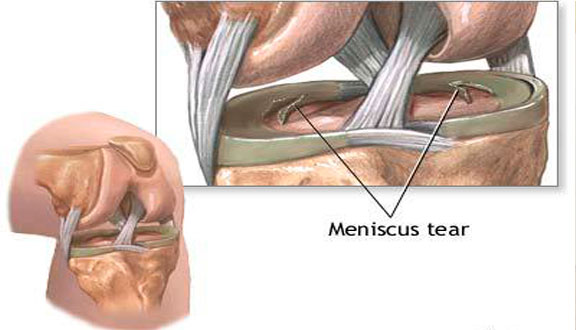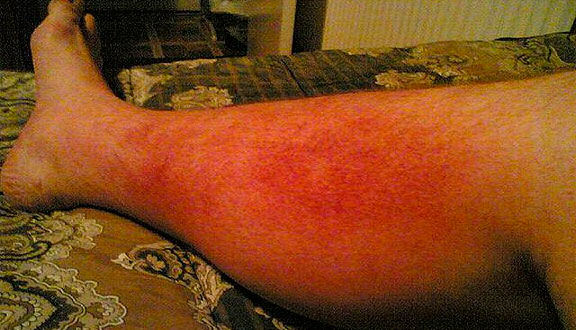Everything You Need To Know About Baker’s Knee Cysts
What is a Baker’s Cyst (popliteal cyst)
Baker’s cyst (popliteal cyst) are benign tumors or swellings on top of a joint or the covering of a tendon that can develop behind the knee. It is also sometimes called a popliteal cyst, as the medical term for the area behind the knee is the popliteal fossa.
The cyst can vary in size from a very small cyst to a large cyst that is a number of centimeters across. Rarely, a Baker’s cyst can develop behind both knees at the same time.
Causes of Baker’s Cysts
Most Baker’s cysts cause some degree of pain, which is often constant and intense, and is exacerbated by joint motion (herniation hypothesis,). When the Baker’s cyst forms on a tendon, some people experience a sense of weakness in the affected areas. The Baker’s cyst is usually formed following acute repetitive trauma; however, 35% of Baker cysts have no discernible cause. Even with the prescribed methods of treatment The Baker’s Cyst Surgery, Aspiration (sucking the synovial fluid out) or injecting the Baker’s cyst with steroids there is still a 41% chance the cyst will return. (National Library of Med)
The anatomy of the popliteal cyst resembles that of synovial tissues. Dye injected into the joint capsule frequently ends up in the cyst, but dye injected into the cyst rarely enters the joint, which has been attributed to the formation of an effective check valve allowing fluid out of the joint, but not back in. Example # 11A This might be one of the main reasons for the high recurrence rate.
Two ways in which Baker’s cysts may form:
Primary Baker’s Cyst

A Baker’s cyst may develop just behind an otherwise healthy knee joint. This type of cyst is sometimes referred to as a primary or idiopathic Baker’s cyst. It usually develops in younger people and children.
It is thought that in this type of Baker’s cyst there is a connection between the knee joint and the popliteal bursa behind the knee. This means that synovial fluid from inside the joint can pass into the popliteal bursa and a Baker’s cyst can form.
Secondary Baker’s cyst
Sometimes a Baker’s cyst can develop if there is an underlying problem within the knee, such as arthritis (including osteoarthritis and rheumatoid arthritis), or a tear in the meniscal cartilage that lines the inside of the knee joint. This type of Baker’s cyst is the most common. It is sometimes referred to as a secondary Baker’s cyst.
In a secondary Baker’s cyst, the underlying problem within the knee joint causes too much synovial fluid to be produced within the joint. As a result of this, the pressure inside the knee increases. This has the effect of stretching the joint capsule. The joint capsule bulges out into the back of the knee, forming the Baker’s cyst that is filled with synovial fluid.
Who can develop a Baker’s cyst?
A Baker’s cyst most commonly occurs in children aged 4 to 7 years and in adults aged 35 to 70 years. However, Baker’s cysts are much more common in adults than in children. You are more likely to develop a Baker’s cyst if you have an underlying problem with your knee.
Arthritis is the most common condition associated with Baker’s cysts. This can include various different types of arthritis, such as osteoarthritis (most common), rheumatoid arthritis, psoriatic arthritis and gout.
Baker’s Knee cysts may also develop if you have had a tear to the meniscus or to one of the ligaments within the knee, or if you have had an infection within the knee joint.
Symptoms associated with Baker’s cysts
Some people with a Baker’s cyst do not have any symptoms. Also, small cysts may not always be found when a doctor examines your knee. The cyst may be found incidentally when having an investigation on your knee, such as an MRI scan for some other reason.
In general, the larger the Baker’s cyst, the more likely it is to produce symptoms. You may be able to see or feel the swelling behind your knee. Sometimes you may also notice that the knee joint itself is swollen. Some people feel an ache around the knee area. It may be difficult to bend your knee if you have a large Baker’s cyst and the area behind your knee may feel tight, especially when you are standing up.
Less commonly, you may feel a sensation of clicking or locking of the knee. If you have an underlying knee problem such as arthritis, you may also have symptoms related to that, such as knee pain.
Are there any complications that can develop?
The most common complication of a Baker’s cyst is for it to rupture (splits open). If this happens, the fluid from inside the popliteal cyst can ooze out into the calf muscle. This can cause swelling of the calf. You may also develop itching and redness of the skin of your calf because of irritation caused by the fluid that leaks out from the cyst. About 1 or 2 in 20 Baker’s cysts are thought to rupture.
If a Baker’s cyst ruptures, it can be quite difficult to tell the difference between the ruptured cyst and a Deep Vein Thrombosis (DVT) . A DVT is a blood clot that forms in a leg vein. In these cases, it is important that investigations are carried out to exclude a DVT because it can be a serious condition that needs treatment.
Having a Baker’s cyst can also increase your risk of developing a Deep Vein Thrombosis even if the cyst does not rupture. For this reason, anyone who is found to have a Baker’s cyst should also have a DVT excluded. Similarly, anyone who is found to have a DVT should be examined and investigated for a possible Baker’s cyst.
How are Baker’s cyst diagnosed?
What are the main treatments for Baker’s cysts?
There are 3 prescribed method of treatments for Baker’s cysts. Or you can try “B-Relief”.

Surgery
An incision is made over the Baker’s cyst and is extracted from the back cavity of the knee.Beware Of The Risks Involved.
Details











